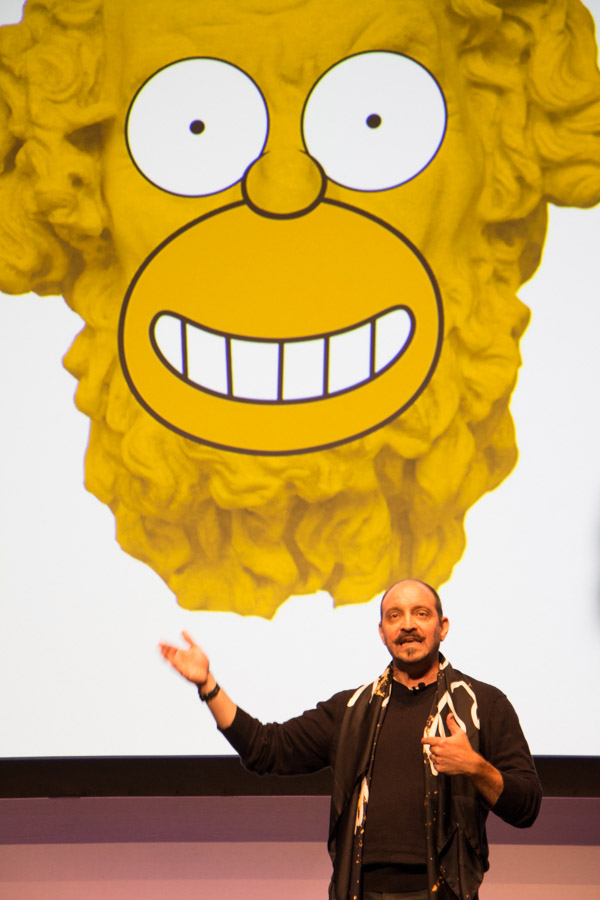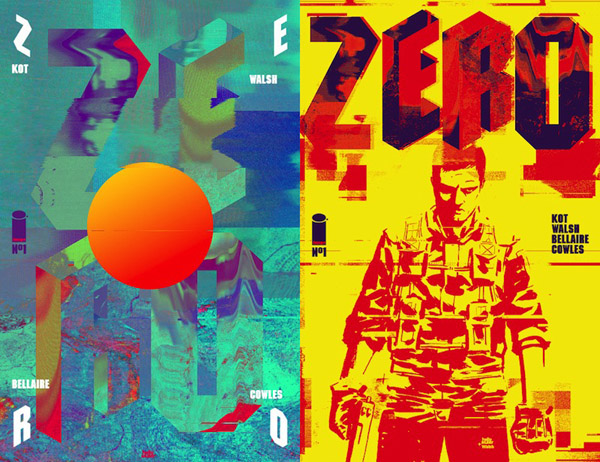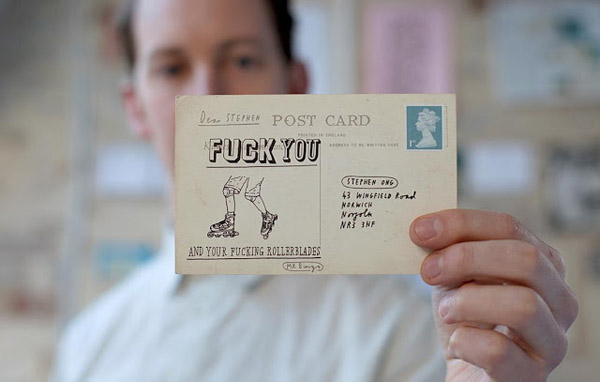Monday morning! You would hardly find a place with more excited faces at this time than the Brighton Dome where the Reasons to be Creative conference is just kicking off. An amazing hand crafted title sequence by From Form appears on the screen as the lights go out in the main theatre to remind the names of the speakers. After a well deserved round of applause John Davey, the man behind the whole event appears to welcome the attendants and do a little survey. Apparently at least a third of the audience were first-timers, while maybe a quarter had attended the event when it was still called Flash on the Beach.
The first keynote was delivered by Iona Waters from Adobe, one of the main partners of the conference. Since the audiences consist mostly of coders and designers, everybody was familiar with the flagship Adobe products. However their ever growing plethora of new tools might seem a little overwhelming to some of us. This is where Iona’s talk came in. She introduced some of the features in Creative Cloud, but also smaller supplementary tools such as Kuler or TypeKit.
The remaining two theatres opened after the first keynote and I have decided to go and see a developer and generative media artist Karsten Schmidt. At the end of his talk, he spoke briefly about his recent 3D printing installation Co(de)Factory because ‘he had to.’ But his talk was mostly a kind of a crash course in history and philosophy for coders. How we came from language to code, and where are we headed? Karsten had many ideological and political points about how we think about technology. For example, he argued that peer-to-peer used to be a very popular platform until it was criminalised by the film and music industry. Nowadays, it is only being used and developed for military purposes, such as many other technologies. As he said, we need more minds thinking about potential uses of these technologies, than just the military ones.
A young Norwegian coder Andreas Ronning spoke about his work on interactive installations and toolkits for developers quite a bit. Luckily he ran through his slides sooner than through his time, and could include his view on the world of coding, which in many ways tied into what Karsten Schmidt spoke about. Andreas started as a Flash developer. Actually left a school to make his living that way and he thought that was what he would do in his life. Then Apple stopped supporting Flash and soon after Adobe just pulled the plug on it. In a very short period of time, Flash totally disappeared and left many unemployed developers in it’s wake. On this example, Andreas explained how fragile the market is when coders are dependent on tools developed by for-profit organisations. In the world so dependent on technology, coding is an important part of our social fabric. Although I did not understand many of the technical details Andreas was speaking about, I was delighted to see that young talented coders such as himself are leaning towards open-source tools, actively developing them and supporting the open-source community.
To balance out these quite technical talks from the first half of the day, I went to see Tom Muller after lunch. Tom is a multifaceted designer and illustrator who works ranges from pixel-perfect websites to very expressive comic books and film posters. His father told him “When you design a kitchen, you should also design the patterns on the tea towels and the graphics on the coffee mugs.” This seems to have stuck with Tom. A graphic novel also needs a logo, a pattern to go on the extra pages, typography and so on. Tom pays attention to all of these aspects and you can see it for example in a critically acclaimed comics series ZERO or graphic novel NOAH on which he recently collaborated with Darren Aronofsky.
Arguably the biggest name of the first day of Reasons was James Victore. Besides being a successful designer and author, he is a kind of a mentor and teacher. Offline, he has been teaching graphic design for over 20 years telling his students ‘to stop trying to invent stuff’ and follow their own passion. Online, especially via his video series Burning Questions, James gives a lot of good life and career lessons and motivation to young designers. His talk was in the same manor. For example he told us to never ask what the client wants. You should do what you want to do because that is why the client hired you.
The last talk of the day was always a so called Inspired Session. This was not a time to take notes, this was time to sit back and enjoy. The first night belonged to Mr. Bingo and his talk (show actually describes it better) is hard to describe in words. It was full of cats, insults, postcards and of course inspiration. All I am going to say now is that if you have a chance to see him speak, do not hesitate. And of course, check back here next week to find out about speakers from the second day of Reasons to be Creative 2014!






